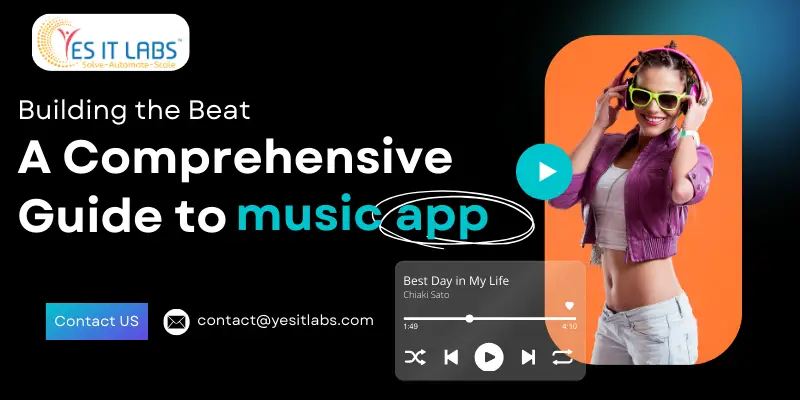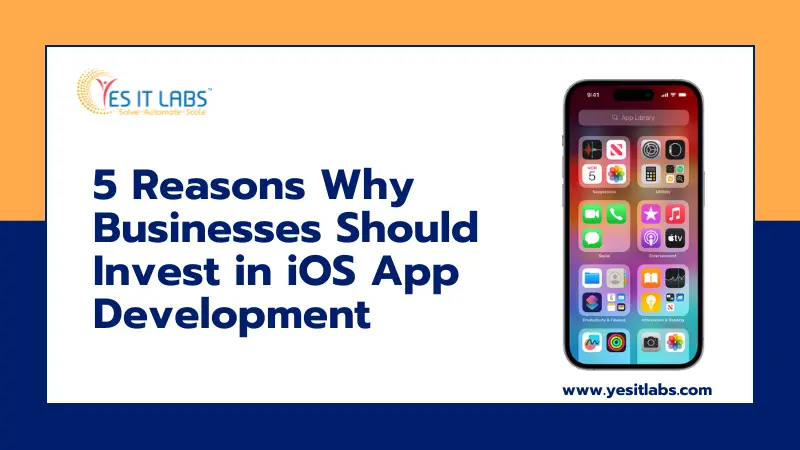

Building the Beat: A Comprehensive Guide to Music App Development
Hey there, music lovers and tech enthusiasts! Have you ever found yourself jamming out to your favorite tunes and thought, “Hey, I could make an app for this”? Well, you’re in luck because today we’re diving deep into the world of music app development. Whether you’re an aspiring entrepreneur, a seasoned developer, or just someone curious about the process, this guide has got you covered.
Understanding the Melody of Mobile App Development
Before we start strumming the strings of music app development, let’s tune into the basics of mobile app development. Creating a mobile app involves a series of steps, from conceptualization to design, development, testing, and deployment. It’s a symphony of creativity, coding, and user experience.
When it comes to music app development, you’re not just building any ordinary app – you’re crafting a platform that resonates with users’ emotions, passions, and preferences. Whether it’s streaming services like Spotify, innovative instruments like GarageBand, or social platforms like SoundCloud, music apps come in various shapes and sizes, catering to different audiences and needs.
Setting the Tempo: Planning Your Music App
Like composing a piece of music, building a successful music app begins with a solid plan. Here’s a breakdown of the key steps:
1. Define Your Audience and Objectives
Before you strum the first chord of development, identify your target audience and what you aim to achieve with your app. Are you targeting music enthusiasts, aspiring musicians, or casual listeners? What unique features will set your app apart from the crowd?
2. Research and Analysis
Study the market to understand existing music apps, their features, strengths, and weaknesses. Analyze user reviews and feedback to uncover pain points and opportunities for improvement. This research will guide your app’s design and functionality.
3. Develop the User Experience (UX) and User Interface (UI)
Crafting an effective app hinges on its design. Generate wireframes and prototypes to conceptualize the user journey and interface. Prioritize simplicity, intuitiveness, and visual appeal to bolster user interaction.
4. Choose the Right Technology Stack
Selecting the appropriate technology stack is vital for building a robust and scalable music app. Consider factors like platform (iOS, Android, or cross-platform), programming languages (e.g., Swift, Kotlin, JavaScript), and frameworks (e.g., React Native, Flutter).
Playing the Chords: Developing Your Music App
Now that you’ve laid the groundwork, it’s time to hit the studio and start coding. Here are the key steps in the development phase:
1. Backend Development
Build the backend infrastructure to handle user authentication, data storage, content delivery, and other essential functionalities. Consider using cloud services like AWS, Google Cloud, or Firebase for scalability and reliability.
2. Frontend Development
Develop the frontend components of your app, including the user interface, navigation, and interactive features. Leverage modern design principles and frameworks to create a seamless and immersive experience.
3. Integrating Music Streaming APIs
If your app involves music streaming or access to a vast music library, integrate with popular music APIs like Spotify, Apple Music, or SoundCloud. This allows users to discover, play, and share their favorite tracks within your app.
4. Implementing Advanced Features
Enhance your app with advanced features such as personalized recommendations, social sharing, playlist creation, offline playback, and real-time collaboration. These features add value and keep users coming back for more.
Fine-Tuning the Sound: Testing and Quality Assurance
Once your app is built, it’s time to fine-tune the sound and ensure everything is in harmony. Here’s how:
1. Testing Across Devices and Platforms
Test your app rigorously across different devices, screen sizes, and operating systems to ensure compatibility and responsiveness. Conduct thorough QA testing to identify and fix bugs, glitches, and performance issues.
2. Beta Testing and User Feedback
Release a beta version of your app to a select group of users and gather feedback on usability, performance, and features. Use this feedback to make necessary improvements and optimizations before the official launch.
Launching Your Music App: Spreading the Melody
Congratulations! Your music app is ready to hit the stage. Here’s how to make a splash with your launch:
1. App Store Optimization (ASO)
Optimize your app’s metadata, including title, description, keywords, and visuals, to improve visibility and discoverability on the app stores. Leverage ASO best practices to attract more downloads and engagement.
2. Marketing and Promotion
Create a buzz around your app through various marketing channels, including social media, influencer partnerships, press releases, and app review sites. Engage with your target audience and encourage word-of-mouth referrals to drive organic growth.
3. Continuous Improvement
The journey doesn’t end with the launch. Monitor user feedback, analytics, and performance metrics to identify areas for improvement and new opportunities. Continuously update and iterate on your app to stay ahead of the competition.
Finding Your Rhythm: Choosing the Right Music App Development Service
If you’re not a coding virtuoso yourself or prefer to focus on other aspects of your business, partnering with a music app development company can be a game-changer. Here’s the guide to discovering the ideal partner:
1. Experience and Expertise
Look for a development company with a proven track record in building successful music apps. Evaluate their portfolio, client feedback, and case studies to assess their proficiency and experience within the industry.
2. Collaboration and Communication
Choose a development partner who values collaboration and communication. They should understand your vision, goals, and requirements and provide proactive guidance and support throughout the project.
3. Quality and Reliability
Prioritize quality and reliability when selecting a development company. Ensure they follow industry best practices, adhere to deadlines, and deliver high-quality, bug-free code.
Wrapping Up
Absolutely! Let’s dive into the exciting world of mobile app development, particularly focusing on music app development. Whether you’re a solo artist with a vision or a budding startup looking to disrupt the industry, building a music app requires creativity, technical prowess, and a deep understanding of your audience.
So grab your headphones, crank up the volume, and start building the beat of the future with YES IT Labs! Are you ready to rock the world of mobile app development? Let’s make some magic happen!
.
Tags: App Development, app development company, best mobile app development company usa, mobile app development, Music App Development, music app development company, music app development service, music application development company













